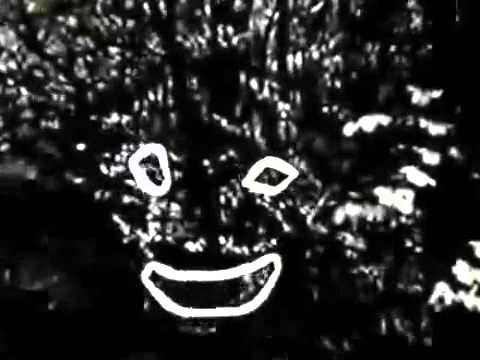Remember listening to Peter and the Wolf as a child, how the narrator would explain that certain instruments correspond to particular characters: the duck — an oboe, the wolf — three horns, and so on?
In the above TED-Ed lesson (memorably animated by Compote Collective), music historian Betsy Schwarm fulfills much the same role for The Four Seasons by Antonio Vivaldi. (Stream it here.)
Why are we so drawn to this Baroque concerto? Is it because we associate it with brunch?
The hundreds of movies and commercials that have featured it?
(Director Robert Benton chose Vivaldi rather than an original composer for the score of Kramer vs. Kramer, arguing that “Concerto in C Major for Mandolin & Strings” captured the troubled Manhattan couple’s refined lifestyle far better than the John Williams-esque bombast the ear associates with some many other cinematic hits of the period. The 1979 film’s success sent “The Four Seasons” to the top of the charts.)
These pleasant associations no doubt account for some of our fondness, but Professor Schwarm posits that the stories contained in the melodies are what really reel us in.
Basically, we’re in the thrall of a musical weather report, reveling in the way Vivaldi manages to bring to life both the birdies’ sunny spring song and the sudden thunderstorm that disrupts it.
Summer rolls out the meteorological big guns with a hailstorm.
Autumn’s cooler nighttime temperatures keep the wine-flushed peasants from turning their harvest celebrations into a full-on bacchanal.
Winter? Well perhaps you’re tucked up contentedly in front of the fireplace right now, gratified to be hearing your own comfort echoed in the largo section.
Inspired by the landscape paintings of artist, Marco Ricci, Vivaldi penned four poems that drive the movements of his most famous work. Their translations, below, are nowhere near as eloquent to the modern listener’s ear, but you’ll find that reading them along with your favorite recording of the Four Seasons will corroborate Professor Schwarm’s thesis.
Spring – Concerto in E Major
Allegro
Springtime is upon us.
The birds celebrate her return with festive song,
and murmuring streams are softly caressed by the breezes.
Thunderstorms, those heralds of Spring, roar, casting their dark mantle over heaven,
Then they die away to silence, and the birds take up their charming songs once more.
Largo
On the flower-strewn meadow, with leafy branches rustling overhead, the goat-herd sleeps, his faithful dog beside him.
Allegro
Led by the festive sound of rustic bagpipes, nymphs and shepherds lightly dance beneath the brilliant canopy of spring.
Summer – Concerto in g‑minor
Allegro non molto
Beneath the blazing sun’s relentless heat
men and flocks are sweltering,
pines are scorched.
We hear the cuckoo’s voice; then sweet songs of the turtle dove and finch are heard.
Soft breezes stir the air….but threatening north wind sweeps them suddenly aside. The shepherd trembles, fearful of violent storm and what may lie ahead.
Adagio e piano — Presto e forte
His limbs are now awakened from their repose by fear of lightning’s flash and thunder’s roar, as gnats and flies buzz furiously around.
Presto
Alas, his worst fears were justified, as the heavens roar and great hailstones beat down upon the proudly standing corn.
Autumn – Concerto in F Major
Allegro
The peasant celebrates with song and dance the harvest safely gathered in.
The cup of Bacchus flows freely, and many find their relief in deep slumber.
Adagio molto
The singing and the dancing die away
as cooling breezes fan the pleasant air,
inviting all to sleep
without a care.
Allegro
The hunters emerge at dawn,
ready for the chase,
with horns and dogs and cries.
Their quarry flees while they give chase.
Terrified and wounded, the prey struggles on,
but, harried, dies
Winter – Concerto in F‑minor
Allegro non molto
Shivering, frozen mid the frosty snow in biting, stinging winds;
running to and fro to stamp one’s icy feet, teeth chattering in the bitter chill.
Largo
To rest contentedly beside the hearth, while those outside are drenched by pouring rain.
Allegro
We tread the icy path slowly and cautiously, for fear of tripping and falling.
Then turn abruptly, slip, crash on the ground and, rising, hasten on across the ice lest it cracks up.
We feel the chill north winds coarse through the home despite the locked and bolted doors…
this is winter, which nonetheless brings its own delights.
You can download the Wichita State University Chamber Players’ recording of Vivaldi’s “Four Seasons” for free here.
See how well you retained your TED-ED lesson with a multiple choice quiz, then read more here.
Related Content:
Why We Love Repetition in Music: Explained in a New TED-Ed Animation
Stream 58 Hours of Free Classical Music Selected to Help You Study, Work, or Simply Relax
The World Concert Hall: Listen To The Best Live Classical Music Concerts for Free
Ayun Halliday is an author, illustrator, theater maker and Chief Primatologist of the East Village Inky zine. Her play Zamboni Godot is opening in New York City in less than three weeks. Follow her @AyunHalliday.



